Changing a light switch
Changing a light switch, or more specifically a one gang switch plate, which is shown below, is a straightforward operation as long as you proceed methodically and safely. This guide is specific to the UK. If you are in any doubt about working with electricity, seek professional advice from a qualified electrician. Before carrying out any work, make sure you have read all of this guide, and fully understand the entire process involved with changing a light switch.
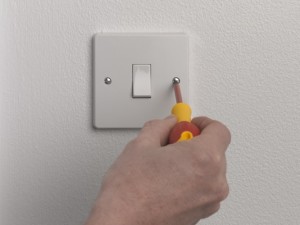 |
1. Before carrying out any work, turn off the mains electricity supply at the consumer unit. Then, unscrew the switch plate retaining screws. |
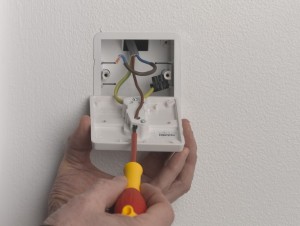 |
2. Gently ease the switch plate forward to reveal the wiring. Unscrew terminal screws to release all wires. |
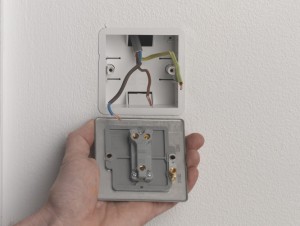 |
3. Follow precisely the manufacturer’s guidelines to connect all three wires to the new switch plate terminals, for a one-way connection. |
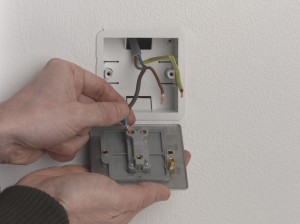 |
4. A section of copper core should be visible at the end of all three wires. Insert each wire into the correct terminal as directed. |
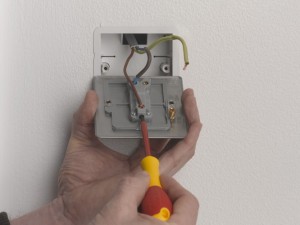 |
5. Only insert bare wire into terminals and ensure no bare wire is visible. Tighten screws securely onto cable cores. |
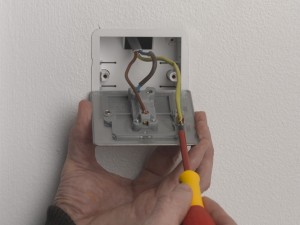 |
6. For a metal switch plate, you must connect the earth wire to the earth terminal on the switch plate. |
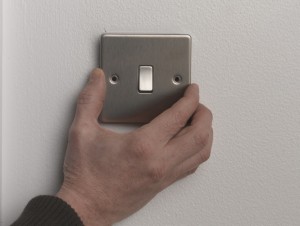 |
7. Reposition the switch plate ensuring that no wires are trapped between the switch plate and the wall surface. |
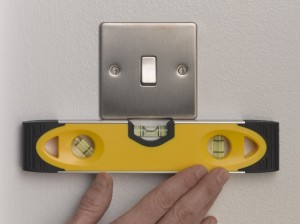 |
8. Fix in place with the retaining screws. Do not overtighten. Ensure the switch plate is level. Restore the power and test. |
Light switch regulations
- Any electrical work must comply with the Institute of Electrical Engineers (IEE) regulations (BS7671). Always follow the manufacturer’s instructions when fitting a new light switch.
- Any electrical installation must comply with Building Regulations, specifically Part P, which came into effect on 1 January 2005, with the amended version coming into effect on 6 April 2006. I recommend you refer to these regulations before carrying out any electrical work. They are available to download on the internet at www.planningportal.gov.uk.
- Replacing a switch is non-notifiable under Part P and therefore it is not necessary to have the work carried out by a qualified electrician, or to inform your local authority building inspector of the work, except in high risk areas, which include kitchens, bathrooms and gardens. For a full list of high risk areas refer to Part P. Part P states that for DIY installations, the installer may wish to employ a qualified electrician to inspect and test the work to make sure that it is safe. I recommend you do this.
- The sequence above shows fitting a metal one gang switch plate  onto a plastic flush mounting box, so the instructions only relate to plastic mounting boxes. If you have metal mounting boxes, earthing requirements may vary and you should refer to the manufacturer’s guidelines.
- Colours used in hard-wire installations (including cables supplying switches) have changed in recent years. The table below shows the different colour for wires, prior to and after April 2004. This guide shows post 2004 wiring.

- If you find earth wires are bare, you must sheathe them with some green and yellow sleeving.
